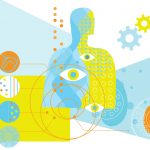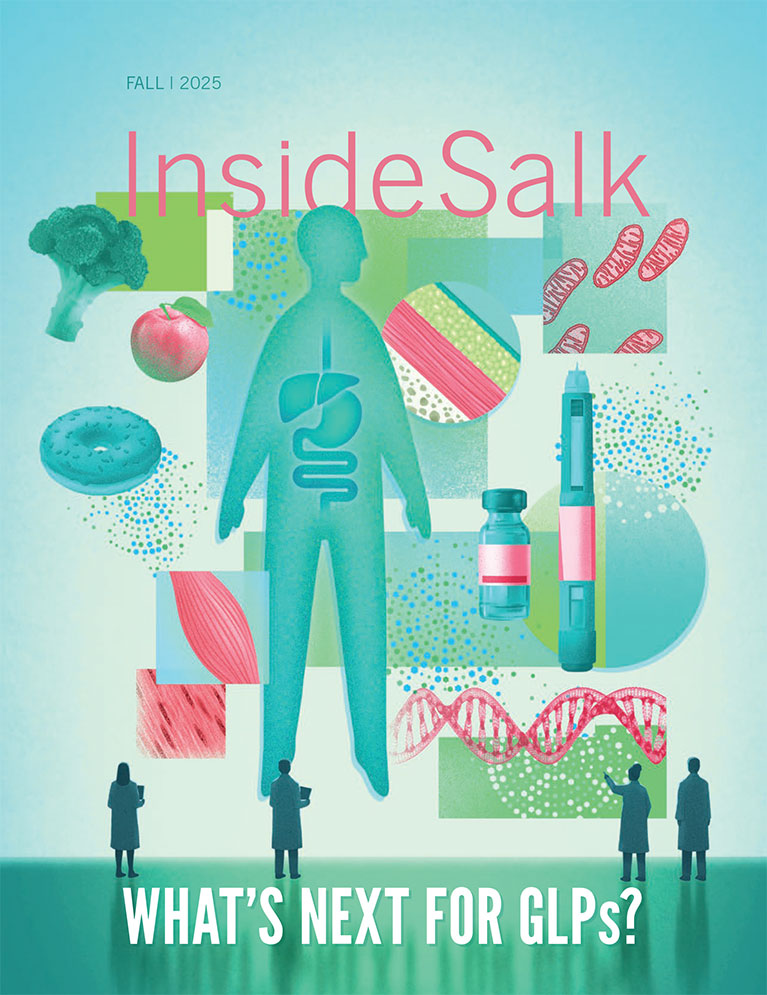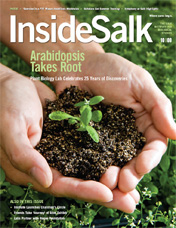A pair of studies from the lab of Professor Satchidananda Panda sheds light on the importance of timing to our health. One, led by Panda, co-senior author and visiting scientist Howard Cooper, and staff scientist Ludovic Mure, and published in Science on February 8, 2018, found that the activity of nearly 80 percent of genes follows a day/night rhythm in many tissue types and brain regions. The other, which appeared in Cell Metabolism on February 6, 2018, uncovered how the liver can have such a speedy response to food, making massive shifts in how it breaks down and stores fats and sugars within minutes of a meal. Both discoveries could inform new therapies for obesity and diabetes.
Read News ReleaseMetabolism
Salk scientists elucidate myriad functions of the protein ERRγ
Researchers in the lab of Professor Ronald Evans published two papers clarifying the functions of the molecule ERRγ (ERR gamma) on energy production and expenditure. First, in Cell Reports on March 6, 2018, Evans, co-senior author Michael Downes, first author Weiwei Fan and colleagues showed that ERRγ helps deliver many of the benefits associated with endurance exercise by activating genes that create more mitochondria (the power houses of cells). This makes ERRγ a potential therapeutic target for conditions with weakened muscles. In Cell Reports on March 13, 2018, co-senior authors Evans and Downes, together with first author Maryam Ahmadian and others, discovered how ERRγ gives “healthier” brown fat its energy-expending identity, potentially offering a new therapeutic target for diseases related to obesity.
Read March 6 News ReleaseRead March 13 News Release
Boosting the effects of vitamin d to tackle diabetes
Salk researchers reported a potential new approach for treating diabetes by protecting beta cells—the cells in the pancreas that produce, store and release insulin. Co-senior authors Ronald Evans and Michael Downes, first author Zong Wei, and colleagues showed that using vitamin D in cells and mouse models proved beneficial in treating damaged beta cells. It also provided new insights about gene regulation that could be applied to developing treatments for other diseases, including cancer. Their paper was published May 10, 2018, in Cell.
Read News ReleaseFeatured Stories
 The immune system: a question of balanceThe immune system is a powerful biological force—a liquid organ that permeates our bodies. Diverse immune cells are constantly on patrol, hunting for miscreants to roust: bacteria, viruses, tumors, cellular trash. The immune system keeps us safe in a hostile world...
The immune system: a question of balanceThe immune system is a powerful biological force—a liquid organ that permeates our bodies. Diverse immune cells are constantly on patrol, hunting for miscreants to roust: bacteria, viruses, tumors, cellular trash. The immune system keeps us safe in a hostile world... Rusty GageComplacency has never been part of Fred (Rusty) Gage’s genetic make-up, neither as he has ascended to the ranks of the world’s most renowned neuroscientists nor as he’s taken the helm as President of the Salk Institute...
Rusty GageComplacency has never been part of Fred (Rusty) Gage’s genetic make-up, neither as he has ascended to the ranks of the world’s most renowned neuroscientists nor as he’s taken the helm as President of the Salk Institute... Emily ManoogianWhen Emily Manoogian was growing up, “scientist” wasn’t even on her list of potential careers. First Manoogian wanted to be a Broadway tap dancer; then a gymnast; later, a lawyer; and finally, towards the end of high school, a veterinarian.
Emily ManoogianWhen Emily Manoogian was growing up, “scientist” wasn’t even on her list of potential careers. First Manoogian wanted to be a Broadway tap dancer; then a gymnast; later, a lawyer; and finally, towards the end of high school, a veterinarian.




















































